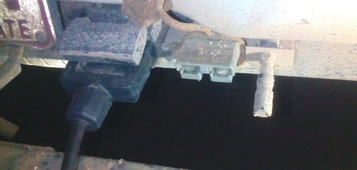Yes, you can replace them with something else, just make sure they have the proper voltage and current ratings. Best to have the current rating at multiple times your actual usage, as contacts will go bad over time if not cycled.
Anderson connectors do go bad. I routinely deal with melted/ burnt up powerpoles. I just replaced 8 of them yesterday. These were genuine Anderson Powerpoles. They had been in service about 22 years.
Over time, if not unplugged and replugged, they can build up contact resistance. Once they start to overheat the plastic starts to deform and the pressure is lost on the contacts. This causes the connection to heat more and melt the connection until it fails open circuit, either by complete meltdown or just open circuit.
Most of the failures I've dealt with are in connections of about 20 years or more, that are not disconnected and reconnected. This goes for may types of connectors, not just the Anderson.



